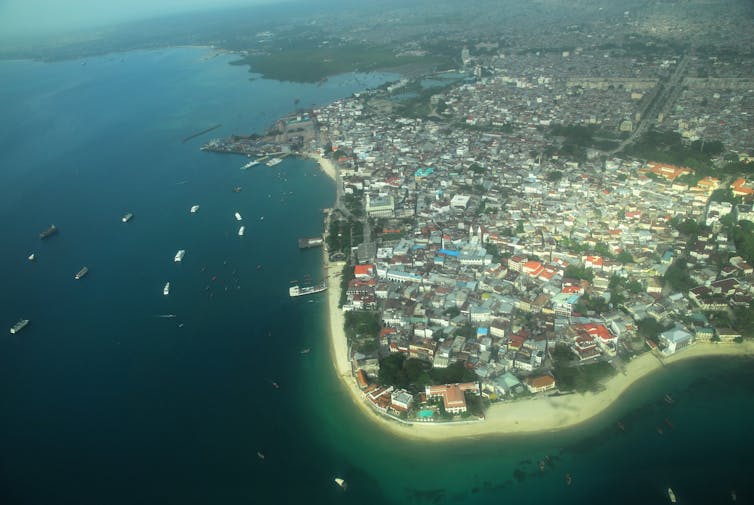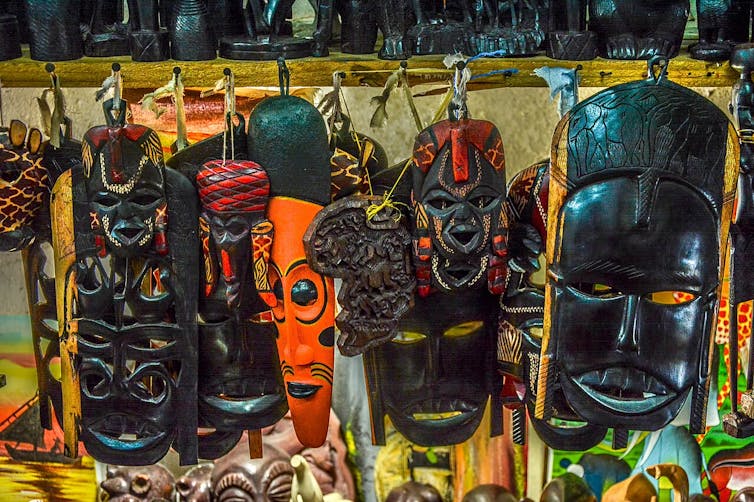Source: The Conversation – UK – By Samuel Lellouch, Assistant Professor in Digital Twinning, School of Physics and Astronomy, University of Birmingham
A US military space-plane, the X-37B orbital test vehicle, is due to embark on its eighth flight into space on August 21 2025. Much of what the X-37B does in space is secret. But it serves partly as a platform for cutting-edge experiments.
One of these experiments is a potential alternative to GPS that makes use of quantum science as a tool for navigation: a quantum inertial sensor.
Satellite-based systems like GPS are ubiquitous in our daily lives, from smartphone maps to aviation and logistics. But GPS isn’t available everywhere. This technology could revolutionise how spacecraft, airplanes, ships and submarines navigate in environments where GPS is unavailable or compromised.
In space, especially beyond Earth’s orbit, GPS signals become unreliable or simply vanish. The same applies underwater, where submarines cannot access GPS at all. And even on Earth, GPS signals can be jammed (blocked), spoofed (making a GPS receiver think it is in a different location) or disabled – for instance, during a conflict.
This makes navigation without GPS a critical challenge. In such scenarios, having navigation systems that function independently of any external signals becomes essential.
Traditional inertial navigation systems (INS), which use accelerometers and gyroscopes to measure a vehicle’s acceleration and rotation, do provide independent navigation, as they can estimate position by tracking how the vehicle moves over time. Think of sitting in a car with your eyes closed: you can still feel turns, stops and accelerations, which your brain integrates to guess where you are over time.
Eventually though, without visual cues, small errors will accumulate and you will entirely lose your positioning. The same goes with classical inertial navigation systems: as small measurement errors accumulate, they gradually drift off course, and need corrections from GPS or other external signals.
Where quantum helps
If you think of quantum physics, what may come to your mind is a strange world where particles behave like waves and Schrödinger’s cat is both dead and alive. These thought experiments genuinely describe how tiny particles like atoms behave.
At very low temperatures, atoms obey the rules of quantum mechanics: they behave like waves and can exist in multiple states simultaneously – two properties that lie at the heart of quantum inertial sensors.
The quantum inertial sensor aboard the X‑37B uses a technique called atom interferometry, where atoms are cooled to the temperature of near absolute zero, so they behave like waves. Using fine-tuned lasers, each atom is split into what’s called a superposition state, similar to Schrödinger’s cat, so that it simultaneously travels along two paths, which are then recombined.
Since the atom behaves like a wave in quantum mechanics, these two paths interfere with each other, creating a pattern similar to overlapping ripples on water. Encoded in this pattern is detailed information about how the atom’s environment has affected its journey. In particular, the tiniest shifts in motion, like sensor rotations or accelerations, leave detectable marks on these atomic “waves”.
Compared to classical inertial navigation systems, quantum sensors offer orders of magnitude greater sensitivity. Because atoms are identical and do not change, unlike mechanical components or electronics, they are far less prone to drift or bias. The result is long duration and high accuracy navigation without the need for external references.
The upcoming X‑37B mission will be the first time this level of quantum inertial navigation is tested in space. Previous missions, such as Nasa’s Cold Atom Laboratory and German Space Agency’s MAIUS-1, have flown atom interferometers in orbit or suborbital flights and successfully demonstrated the physics behind atom interferometry in space, though not specifically for navigation purposes.
By contrast, the X‑37B experiment is designed as a compact, high-performance, resilient inertial navigation unit for real world, long-duration missions. It moves atom interferometry out of the realms of pure science and into a practical application for aerospace. This is a big leap.
This has important implications for both military and civilian spaceflight. For the US Space Force, it represents a step towards greater operational resilience, particularly in scenarios where GPS might be denied. For future space exploration, such as to the Moon, Mars or even deep space, where autonomy is key, a quantum navigation system could serve not only as a reliable backup but even as a primary system when signals from Earth are unavailable.
Quantum navigation is just one part of the current, broader wave of quantum technologies moving from lab research into real-world applications. While quantum computing and quantum communication often steal headlines, systems like quantum clocks and quantum sensors are likely to be the first to see widespread use.
Countries including the US, China and the UK are investing heavily in quantum inertial sensing, with recent airborne and submarine tests showing strong promise. In 2024, Boeing and AOSense conducted the world’s first in-flight quantum inertial navigation test aboard a crewed aircraft.
This demonstrated continuous GPS-free navigation for approximately four hours. That same year, the UK conducted its first publicly acknowledged quantum navigation flight test on a commercial aircraft.
This summer, the X‑37B mission will bring these advances into space. Because of its military nature, the test could remain quiet and unpublicised. But if it succeeds, it could be remembered as the moment space navigation took a quantum leap forward.
![]()
Samuel Lellouch does not work for, consult, own shares in or receive funding from any company or organisation that would benefit from this article, and has disclosed no relevant affiliations beyond their academic appointment.
– ref. Quantum alternative to GPS navigation will be tested on US military spaceplane – https://theconversation.com/quantum-alternative-to-gps-navigation-will-be-tested-on-us-military-spaceplane-262967









